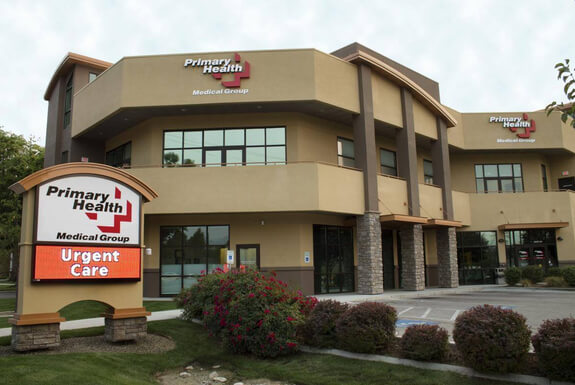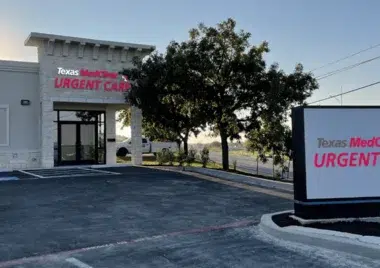Expert Advice on Navigating Clinic Options for Urgent Care
Expert Advice on Navigating Clinic Options for Urgent Care
Blog Article
The Significance of Urgent Treatment Centers in Connecting the Space In Between Health Care and Emergency Situation Providers
Urgent treatment centers have actually emerged as an important part of the health care landscape, efficiently dealing with the important need for instant clinical focus without resorting to emergency situation solutions. By providing look after non-life-threatening conditions, these centers aid to reduce the problem on emergency situation rooms and improve person accessibility to timely treatment. Their prolonged hours and varied solutions deal with an expanding populace seeking choices to standard health care. However, the developing role of immediate care facilities raises vital concerns about their integration within the wider healthcare system and the ramifications for patient results and source appropriation.
Summary of Urgent Care Centers
Immediate care centers have come to be an essential component of the healthcare delivery system, providing easily accessible medical solutions for non-life-threatening problems. These facilities usually run outside typical workplace hours, offering patients an option to emergency clinic and health care setups. Clients looking for immediate treatment commonly present with problems such as small injuries, infections, or diseases that call for prompt interest yet do not present a prompt risk to life or arm or leg.
Immediate care facilities are staffed by an array of medical care professionals, consisting of physicians, registered nurse specialists, and physician aides, who are furnished to diagnose and deal with different clinical concerns. They frequently include diagnostic tools such as X-ray equipments and lab services, enabling them to offer extensive treatment on-site.
The establishment of urgent treatment facilities has been affected by the enhancing need for timely clinical services in a busy society, where individuals may battle to protect consultations with medical care companies. Because of this, these centers intend to reduce congestion in emergency departments, enhancing general medical care performance. In addition, urgent care centers commonly function as a bridge in between health care and emergency situation solutions, guaranteeing that clients receive proper treatment tailored to their particular medical needs.

Benefits of Urgent Treatment Provider
Accessing timely clinical care is a substantial advantage of immediate care solutions. These facilities give prompt interest for non-life-threatening conditions, effectively reducing delay times contrasted to traditional emergency departments. Clients looking for care for minor injuries, ailments, or immediate wellness problems can get treatment without the long delays usually connected with medical facility check outs.
An additional trick advantage is the prolonged hours of procedure. Lots of immediate treatment centers are open nights and weekends, accommodating clients who may not have the ability to see their key treatment provider during common workplace hours. This adaptability makes urgent care an easily accessible alternative for those with busy schedules or unexpected wellness issues.
In addition, immediate treatment facilities usually use a broad range of services, including analysis screening, X-rays, and fundamental laboratory solutions. This thorough technique enables for quick diagnosis and treatment, enhancing client fulfillment.
In addition, immediate care centers are usually extra cost-efficient than emergency clinic, making them an attractive alternative for individuals without insurance policy or those with high-deductible strategies. Generally, urgent care solutions play a vital role in providing available, prompt, and affordable healthcare.
Comparison With Health Care
Commonly, individuals often consider their options between immediate treatment centers and main treatment suppliers when seeking clinical focus. Both serve essential duties in the health care system, yet they differ significantly in ease of access, cost, and extent.
Health care carriers are commonly the very first point of get in touch with for individuals, focusing on long-term health and wellness management, precautionary care, and persistent condition administration. They provide connection of treatment, fostering a patient-provider partnership that allows for comprehensive wellness analyses and personalized treatment plans. Scheduling an appointment can be time-consuming, typically needing days or weeks in development. Urgent Care.
On the other hand, immediate treatment facilities offer instant take care of Recommended Reading non-life-threatening conditions that call for prompt attention, such as minor injuries or infections. These centers commonly operate outside of standard workplace hours, suiting people that may not be able to visit their health care supplier throughout normal organization times. In addition, urgent care is typically a lot more cost-efficient than emergency clinic check outs, making it an appealing choice for those with restricted medical care accessibility.
Ultimately, while urgent treatment centers and primary treatment carriers both add to individual health, they satisfy unique needs, making it critical for individuals to determine which alternative finest straightens with their scenarios.
Emergency Situation Solutions Interaction
The communication between immediate care facilities and emergency services is a vital element of the health care landscape, especially when patients encounter circumstances that may escalate in seriousness. Urgent treatment facilities offer as a bridge between medical care and emergency departments, attending to non-life-threatening problems that call for prompt interest. This cooperation enhances patient end results and optimizes resource allocation within the health care system.
When people offer with not dangerous but immediate problems, immediate treatment centers can successfully manage their needs, easing blockage in emergency clinic. Facilities geared up with diagnostic abilities can promote timely referrals to emergency services when a client's problem surpasses the scope of urgent care treatment. This seamless communication helps ensure that clients get the proper degree of treatment without unneeded delays.
Moreover, effective communication between immediate treatment providers and emergency services is essential. Sharing individual details and therapy histories promotes collaborated care, decreasing the risk of repetitive examinations and treatments. As healthcare continues to evolve, the vibrant partnership between urgent care facilities and emergency situation solutions will certainly play a crucial role in enhancing individual care performance, fulfillment, and general health end results within the neighborhood.
Future of Urgent Care Facilities
As medical care demands advance, the future of urgent treatment facilities is positioned to become increasingly indispensable to the general medical ecological community (Urgent Care). These centers resource are most likely to broaden their duties by incorporating innovative innovations, such as telemedicine, artificial knowledge, and electronic wellness record integration. This will certainly improve client accessibility and simplify care sychronisation between immediate treatment, main treatment, and emergency solutions
Moreover, urgent treatment facilities are anticipated to diversify their solution offerings to include preventative care and persistent disease monitoring. This shift will position them as important parts in taking care of populace health and wellness, minimizing the problem on emergency situation divisions, and resolving spaces in health care accessibility.
The growing trend of value-based care will certainly further increase the transformation of urgent treatment facilities, motivating them to concentrate on person end results and satisfaction. Facilities might additionally take on collective method models, working carefully with experts and primary care suppliers to make sure detailed individual administration.
Verdict
In verdict, urgent treatment facilities serve an important function in the medical care system by giving instant accessibility to treatment for non-life-threatening conditions, effectively relieving stress on emergency services. Their prolonged hours and diverse series of solutions improve patient convenience and satisfaction, while also ensuring ideal treatment shipment. As health care needs remain to advance, the function of urgent treatment facilities will likely come to be increasingly substantial, additional bridging the space in between health care and emergency situation solutions.
The establishment of urgent treatment facilities has been affected by the raising demand for timely clinical solutions in a hectic culture, where Recommended Site patients may battle to secure consultations with primary care carriers. In addition, urgent treatment centers usually serve as a bridge in between main treatment and emergency situation services, ensuring that people obtain proper care customized to their particular clinical needs.
Many immediate treatment facilities are open nights and weekend breaks, accommodating clients that might not be able to see their primary care service provider throughout typical workplace hours (Urgent Care). As healthcare continues to progress, the vibrant connection in between urgent care centers and emergency situation solutions will play a crucial role in improving client care efficiency, fulfillment, and general health and wellness results within the neighborhood

Report this page